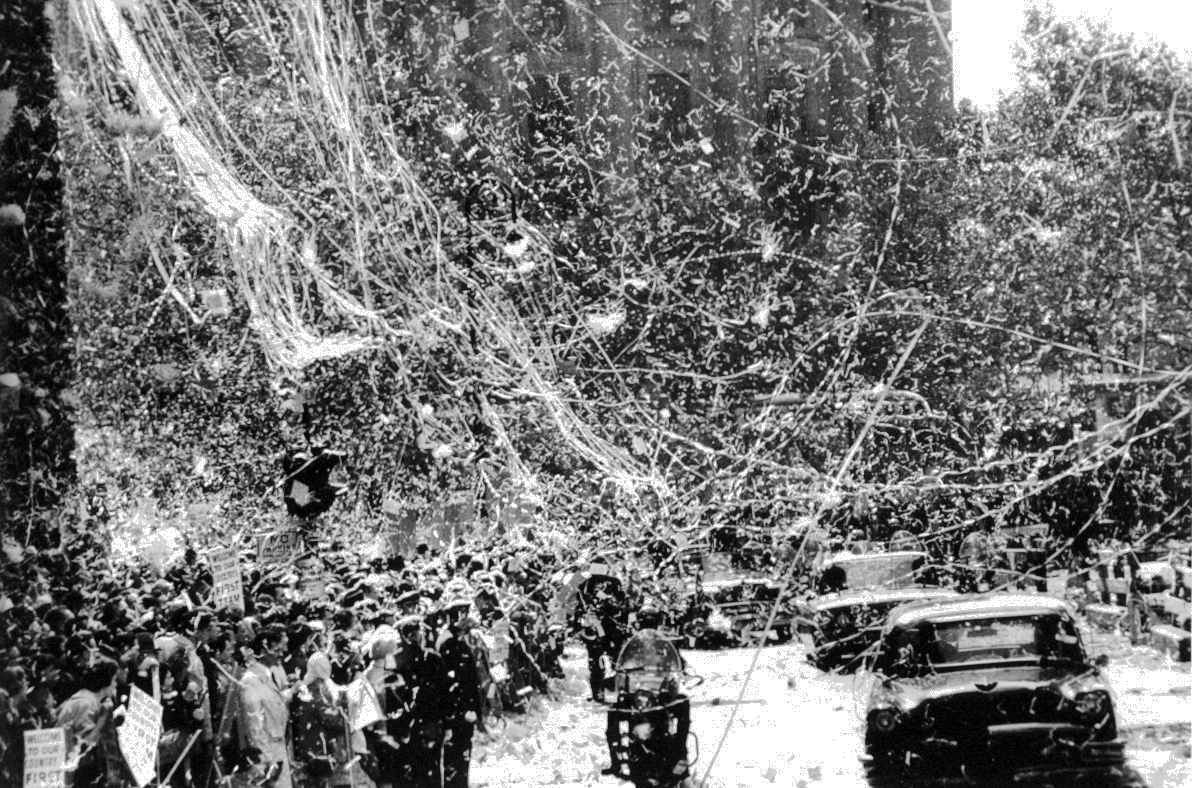LIFE IS A FLOWING STREAM and information is a constant feed. Today it feels like everything is a feed – social media, mailboxes, video services, and yes, streaming. But this is nothing new, just the latest iteration of fascinating feeds that have been a part of our experience for many years. Here’s some more to learn about.

TICKER TAPE is more than just parades; combined with a telegraph symbol, they turned dots and dashes from information written down by an operator and handed to a customer, to a stream of numbers and characters coiling on the floor of offices. Naturally, finance became the main user, but anywhere breaking information was needed, news, alerts and updates, would appreciate this feed. The offices of the late 19th/early 20th centuries halted to see the latest issued numbers and events as a series of clacking and clicking. The ever-moving stream of information on ticker tape lives to this day – when you see INFORMATION SCROLL on LCD screens or television news programs, it has a very, very old relative.
What about audio? Moving through the airwaves, for decades, there have been what are called NUMBERS STATIONS. Tune into radio frequencies around the world, and a machine voice will read a list of numbers, one after another, with small breaks in between. Nobody knows what they’re for exactly, or how they’re kept up, but theories have come up over the years, and the winner right now is that they’re SPY COMMUNICATIONS. An agent sits with a one-time pad at a pre-determined time, and the numbers come through to their radio set, telling them the next set of instructions, with no human aspect whatsoever; not a thank you, a good luck, just a paragraph of digits telling you what to do. The numbers stations never change the amount of messages, probably to hide how many agents are out in the field. They were (and are) especially entrancing at night…
With the WORLD WIDE WEB, feeds came and went, and a few still bring a sense of nostalgia and warmth.
Lost in the folds of the cozyweb was the experience of the ID SOFTWARE PLAN FILES, taking advantage of an even-then disappearing platform of expression. In the early days of networked computers, it was possible to set a “.plan” (dot-plan) file, which would be a line or paragraph describing your CURRENT STATUS on the computer. The idea of what your status could be was left open – maybe it was a project, your intentions for the future, or simply indicating if you were at the office or not. It was also an easy way to show what you were working on, or how you should be best contacted. It fell by the wayside when the internet stopped being a universities-and-science paradise, but for some reason, the busy programmers at iD software (DOOM, QUAKE) decided to make it one of the main ways to keep their fans informed. Predating BLOGS AND TWITTER by an Internet generation, they gave insight into the usually secretive world of game development for thousands of interested fans.

In the beginning (1990s) of the World Wide Web, pages that were hand-updated to indicate changing news and up-and-coming sites were critical, because there was no “central directory” or way to search the Web for what you were looking for. (Companies that added that service became very rich, indeed.) Among the very first was the WHAT’S NEW page from NCSA MOSAIC. Imagine checking every morning for the few dozen websites that had popped up since yesterday. You could literally claim you’d browsed the whole web by lunch.

Eventually, the world settled on a more-or-less standard for providing feeds: RSS or Really Simple Syndication, a general format for feeds that allowed everything: from weather services and music stations, to writers and bloggers honing their craft, who expected their audience would be able to notice the new content quickly and cleanly. This is where things have mostly stuck – even when you use a modern social media platform, you’re probably moving in a very complicated, very intense web feed beating down deep inside the machine.
As for the future, that’s the best thing about feeds… you’re always waiting for what’s next.